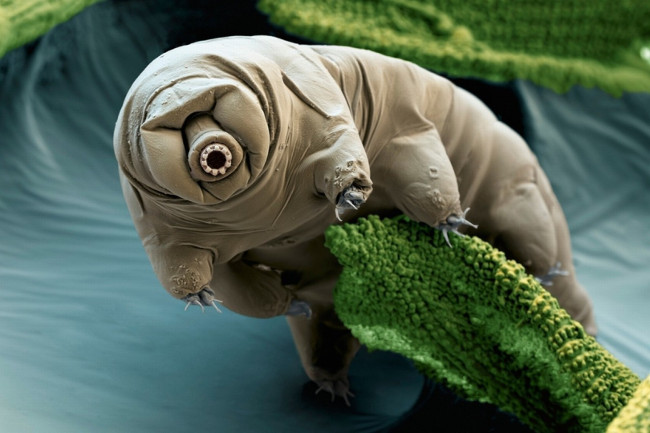Strange gene of the only animal that survives in the universe
The only animals that can survive in harsh environments in space without special support devices have the most exotic DNA among species.
Study of the strange genome of water bears
According to Discovery News, one-sixth of the water bear's genome, also known as tardigrade , is not a body but comes from other organisms. The study, published Nov. 18 in the Proceeding of the National Academy of Sciences, provides further evidence that tiny water bears are the most unique animals and seem hard to destroy.
In 2007, scientists placed a number of water bears outside satellites and launched them into space. When the satellite returned to Earth, many water bears were still alive. Some females lay eggs in the space and the young are healthy as no matter what happens.

Water bears can survive in harsh conditions like in the universe.(Photo: NASA).
"We do not know the genome of an animal can include so many strange DNA. Many animals develop strange genes, but we have not encountered such levels , " said Bob Goldstein, a scientist at The University of North Carolina, co-author of the study, said.
Water bears are microscopic animals that have 8 legs, a roughly divided body and a length of 1.5mm . Goldstein and Thomas Boothby, the study's lead author, and colleagues identified water bears collecting 6,000 strange genes mainly from bacteria, plants, fungi and various unicellular microorganisms.
This means that 17.5% of the water bear genome comes from outside sources. Water bears possess strange DNA through horizontal gene transfer. Instead of inheriting DNA, water bears exchange with other species.
"Animals that exist in harsh environments tend to take genes outside and gene bacteria can withstand harsh conditions better than animal genes," Boothby said.
According to the scientists' guess, when exposed to harsh conditions such as drying, the water of the water bear will split into small segments. When cells lose water, the cell membrane and nucleus temporarily have a gap, so that DNA and other large molecules can pass easily.
During this process, water bears not only repair their own damaged DNA, but also connect to foreign DNA, creating a genome from many different species. The record of keeping many strange DNA before belonged to a micro-animal named rotifer . However, the number of strange genes in the rotifers is only half that of water bears.
- Impressive with the amazing 'riding' in the animal world
- Chicken 4 wings
- No sexual reproduction but still gene exchange
- Paranormal phenomena from the universe
- Curiosity sees the strange animal skeleton on Mars
- New hypothesis: Black holes in the universe turn into
- Finding a gene helps people adapt to new foods
- Decoding the gene of the big cat family line
- Detecting a strange explosion in a distant galaxy
- People will parachute from ... the universe?
- Great discoveries about the universe are unknown (1)
- Strange girl: Never knows pain
 Animal 'suffering' after hibernation
Animal 'suffering' after hibernation Why do goats climb well?
Why do goats climb well? Scientists were surprised to see chimpanzees eating turtles
Scientists were surprised to see chimpanzees eating turtles Giant catfish died deadly due to drought in Thailand
Giant catfish died deadly due to drought in Thailand